|
December 12, 2022
Dear Neighbors and Friends,
I hope that you and your loved ones are doing well, staying healthy, and looking out for your neighbors and friends during this past week.
In this week’s newsletter you’ll get an update on where we are as a Legislature as we transition from one governor to another and from one set of members and leaders to another—along with the budgetary challenges that we’ll be facing in 2023. You’ll also find information about Ballot Measure 114 implementation, new appropriations from the Emergency Board, and other items that came up during last week’s Legislative Days.
On the COVID front, the resurgence in COVID hospitalizations that we were seeing for the last couple of weeks appear to have slowed down, at least for this past week. However, we’re continuing to see big increases in non-COVID hospitalizations and infections in adults as well as in children. COVID wastewater analysis is continuing to show increases, though that’s no longer the case for Portland.
As you’ll see in the links, Oregon’s State Epidemiologist and the CDC are also now recommending that people voluntarily increase their mask-wearing when in indoor public places such as grocery stores in order to help contain the spread of the various respiratory ailments. We’ll see if people agree to do so. (I haven’t seen much of an increase so far.)
Until next week, please do your best to stay happy, healthy and safe. And let me know if you have any questions or thoughts about anything in this week’s newsletter.
Transition Time for the Legislature
Now that the elections are behind us, I’m being asked all the time about the upcoming 2023 session. Who will be chairing X committee? Who will be sitting on that committee? How much money will be available for new programs? How much of existing programs may need to be cut?
It’s with a great deal of humility that I must respond—I don’t know! At this point, no one does.
We’re actually in an unusually uncertain time right now. The last time we had this kind of transition from one Governor to another was in 2011 (since the transition from Governor Kitzhaber to Governor Brown in 2016 was the result of a mid-term resignation). Normally, the Governor’s proposed budget would have already been released on December 1, and we would have had a clear sense of what the different agencies were proposing. With this shift from one administration to another, we won’t be receiving the new Governor’s proposal until the first week of February. Governor-elect Kotek is currently assembling her team of policy leaders and determining which agency heads will stay on and which will be replaced. We have a sense of her priorities, but obviously things remain in flux.
We do know that the budget will be a challenge for us this session. We’re coming off of a session that had a lot of one-time dollars available, thanks to one-time Federal dollars. Unfortunately, we can’t count on those dollars continuing to come to Oregon. As you know, our state revenues have been unusually high over the past few years. But we can’t count on those revenues continuing at this point. And most of those increases will be sent back to taxpayers next year via the individual kicker—more than $3 billion worth. Most of those dollars will go to higher-income Oregonians.
We’re hearing many requests for those dollars to be diverted in whole or in part for high-priority needs, such as addressing homelessness and helping to fix our broken student financial aid and public defense systems. Unfortunately, such a change would require a 2/3 vote of each chamber, and Republican leadership has made it clear that they are not interested at present.
For more information about the current state of the budget, here’s the latest info from the Legislative Fiscal Office and the Governor's Budget Office
As for the questions about committee assignments, those too are very much in flux. In part, that’s because the Senate is seeing a historic change in leadership, given the retirement of Senator Peter Courtney of Salem, after 20 years as President.
Senate Democrats, who will again hold the majority in the next session, have chosen Senate Majority Leader Rob Wagner of Lake Oswego to be our President for the next biennium. We can expect that the Republicans will vote for someone else (as they did last time when nearly all of the Senate Rs voted for someone other than President Courtney), but Wagner should prevail.
President Wagner is currently finalizing his staff selections. He is bringing over many of those who worked closely with him when he was Senate Majority Leader:
Chief of Staff: Tom Powers (formerly Chief of Staff for the Majority Office)
Legislative Director: Dominique Rossi (formerly Policy Advisor and Interim Chief of Staff)
Deputy Chief of Staff: Carol Suzuki (formerly Operations Manager for the Majority Office)
Meanwhile, the Majority Leader Kate Lieber has selected Stephen Watson (formerly Communications Director and Interim Chief of Staff) to be the Caucus Administrator/Chief of Staff.
Now that Senator Wagner has pinpointed key staff members, he is working on committee assignments, speaking to individual members from both parties about their preferences. He is hoping to have those assignments nailed down over the next ten days or so.
And then there’s the House! Unlike in the Senate, where only one of the new members is truly new (Senator-elect Aaron Woods), with the remaining five new members coming over from the House (Reps Weber, Bonham, Hayden, Meek, and Campos—the first three Rs, the final two Ds), the House is FULL of new members from both parties. It’s exciting, but also a bit daunting. I know that Speaker Dan Rayfield of Corvallis, who has received the support needed to stay on for another term, is just getting to know many of these members for the first time and to figure out the House committees, including the House members of joint House-Senate committees. With sixty members to account for, that too will take time.
I’ll let you know when we know more.
Saying Farewell
As always occurs during Leg Days, the Senate (unlike the House) had a floor session for the purpose of confirming Governor appointments to various Boards, Commissions, and Agency Directors. This time we only had a couple of appointments to confirm, yet the session went on for quite a while.
And that’s because it was the final floor session for a number of senators—some of whom have been with us for a relatively short time and others, especially Senator Courtney, who’ve been with us for a very, very long time. As you can imagine, the speeches acknowledging their service were many and long. (Even I went on perhaps a bit too long.)
Included among the six were two relatively young women who had been appointed by County Commissioners to fill out the final months of veteran senators—Senator Rachel Armitage, who was appointed to fill out the term of Senator Betsy Johnson, who resigned to begin her unsuccessful race for Governor; and Senator Akasha Lawrence-Spence, who fill out the term of Senator Ginny Burdick, who left to join the Northwest Power Planning Council. They were both wonderful—if short term—additions to the Senate. They brought youth and smarts and unique perspectives to the Senate. I made the point in my floor speech that we owe a debt of gratitude to the County Commissioners who chose NOT to do the usual thing—appoint people at the end of their careers for such a short-term assignment—but rather chose to take a chance on young and promising women to add fresh perspective to what is too often a rather stodgy body. It worked.
We also paid tribute to Republican Senators Chuck Thomsen of Hood River (in the Senate since 2011) and Bill Kennemer of Oregon City (most recently an appointee to the Senate but who had previously served multiple terms in the Senate and House).
And to Senator Lee Beyer of Springfield (also a veteran of many terms in the House and Senate, as well as chairing our Public Utilities Commission), who was my partner on a number of environmental issues, including the Recycling Modernization Act.
And of course to President Courtney. President Courtney was my partner on Tuition Equity in 2013 while I was still in the House. As I pointed out in my floor speech, he has always been a voice for Oregon kids, no matter who their parents are or where they came from.
I wish all of these colleagues best wishes for their retirement or whatever is next up for them. Their service has made a difference.
If you’d like to check out the various tributes, you can listen to the floor speeches here. here.
And here’s coverage from the Capital Chronicle.
Judiciary Receives Update on Measure 114
As you’ve probably seen in the news, the voter-approved Ballot Measure 114, which addressed gun safety in Oregon, is currently on hold, pending judicial review. A federal judge has given permission for most of it to proceed, while a Harney County circuit judge has put a stay on it. A hearing will be held this week.
As you may remember, Measure 114 contains three elements: a prohibition on large-capacity magazines, a closing of the “Charleston Loophole” that allows background checks to be automatically approved, and the requirement that gun purchasers receive a permit to purchase that certifies their ability to use the weapon responsibly.
The Senate Judiciary Committee kicked off its December 8 hearing with a status report from Oregon State Police Superintendent Terri Davie. Notwithstanding the judicial delay, the OSP has been hard at work preparing for the potential implementation of the measure.
As you know, I’ve been and remain a supporter of the measure, but I do wish it had had a longer implementation period for the permit to purchase. As written, were it not for the judicial stay, it would have needed to go into effect already, before the program could effectively be implemented. Ideally, the courts will provide more time for full implementation to occur or for the Legislature to make any changes that might be needed.
In anticipation of the measure going into effect, OSP has created a Permit to Purchase website.
The website includes temporary rules that will go into effect once the program is allowed to proceed as well as a proposed application form to be used by all the counties for the Permit to Purchase. Meanwhile, the Sheriff’s Association is updating the test for a Concealed Handgun License, which will be a model for the new permit (including, for example, information about suicide prevention and our new safe storage requirements).
Here’s more on the current state of play on M114 from OPB.
Wednesday’s Judiciary hearing also heard a number of additional updates on judiciary matters, including the Public Defenders crisis here in Oregon and an update that I led on implementation of our new process for automatic expungement of certain juvenile records here in Oregon. Here's a link to the hearing.
Emergency Board Appropriates $100 Million in Emergency Funding
Leg Days ended on Friday with a meeting of the interim Emergency Board, whose job it is to approve appropriations that need to be made between legislative sessions. The appropriation that has generated the most media interest is $10 million more funding to shore up the state’s damaged Public Defense system, which has been unable to attract and retain the public defense lawyers needed to allow our judicial system to function. You’ve likely heard about the number of individuals accused of misdemeanors and even felonies who’ve seen their cases drag on for months or even dismissed simply because adequate defense could not be found for them. It’s not clear how much benefit these additional dollars will provide at this point, but legislators on the E-Board felt that they needed to keep working to address this problem. You can read more about the problem and the appropriating in this piece of reporting from the Statesman-Journal.
Here are some of the other actions taken by the E-Board on Friday:
- Approved a $17.4 million grant application for community wildfire defense and a $6 million grant application for disaster relief from the US Forest Service.
- Increased the Other Funds expenditure limitation by $9 million for the Oregon Department of Human Services (ODHS) to spend funding related to the Interagency Agreement with Oregon Housing and Community Services for the Youth Experiencing Homelessness Program.
- Approved a $5.5 million grant application for the Infrastructure Investment and Jobs Act (IIJA) from the U.S. Department of Energy for energy planning, policy and program development work.
- Approved a federal grant application for $3.1 million through the Bipartisan Safer Communities Act (BSCA) for a State Crisis Intervention program to be used possibly for red flag law training, education, and public awareness initiatives; state crisis intervention specialized court-based programs; behavioral health deflection for at risk individuals; and law enforcement for safe security, storage, tracking and returning of relinquished firearms.
- Approved a $250,000 grant application for the Oregon Health Authority (OHA) from the Substance Abuse and Mental Health Services Administration (SAMSHA) to enhance training for behavioral health mobile crisis teams.
You can find a full list of approved allocations here.
Other Reports and Presentations: Education and Energy/Environment
This last week of Leg Days committee hearings were rich in updates, reports, and presentations, most of them setting us up for further work in the 2023 session. I haven’t yet had a chance to go through them all, but let me steer you to materials from two of my other committees: Senate Education and Energy and Environment.
In Senate Education we received information about
- Year 2 of investments in K-12 summer learning programs. You can check check out the presentations on the programs offered directly by school districts and by community-based organizations with funding the Legislature provided. We’re hoping that this will be the end of temporary funding for these programs, and we can find a stable funding source that will allow those providing the programs to know for sure that they will be able to provide needed services to the kids most in need.
- Things to consider as we work on addressing the shortages in our educator workforce.
- And an update on how the funds appropriated by the Legislature via HB 4030 earlier this year to address workforce shortages are being used by the districts.
-
A report from the National Center on Higher Education Management Systems (NCHEMS) on the state of higher education in Oregon. (Warning: It’s dismal and needs immediate attention.)
In Senate Energy and Environment we heard several interesting presentations. The most extensive and definitely worth your time perusing is the presentation on the 2022 Biennial Energy Report from the Department of Energy.The report not only brings you up to date on where we are as a state in our movement towards more sustainable energy sources, but it’s a rich, easy-to-follow primer on all the different kinds of energy sources we currently have. I recommend it highly.
Last week's newsletter included links to all of the committee hearings if you want to check out the hearings themselves and the attached materials.
ON THE COVID FRONT
Weekly Data Report:
OHA now updates and reports COVID metrics once a week, on Wednesdays. Here are the last set of daily results, for this past week from 12/1/22 through 12/7/22.
As you’ll see, this week’s report is again mixed one, with reported infections up and hospitalizations and deaths down.
- The 7-day average for new infections jumped last week, from 475 the previous week to 715 reported infections per day this last week. The number of new cases is again likely an undercount, as many people are using home tests to determine their infection status but are not reporting those results.
- Average test positivity for the last week increased again, to 9.9% vs. the previous week’s 9.6%. Again, this number skews high because it likely reflects a higher proportion of people showing COVID symptoms (and thus reporting or going in for a test, rather than self-testing and never reporting).
- On Wednesday there were 322 COVID-19-related hospitalizations statewide, a big drop from 363 last Wednesday. Hospitalizations are now our best indicator of disease spread. Again, however, most of these hospitalizations are not in and of themselves due to COVID—more than half are those who tested positive after having been admitted for other reasons.
- The number of COVID patients in Oregon’s ICUs on Wednesday went back down again, from 38 to 30. These are the most serious COVID infections.
- There were 28 COVID-19-related deaths reported during the last week, down from the previous week’s 40. Again, some of every week’s reported deaths actually occurred in earlier weeks but were just reported to the state. The newsletter’s final graph shows when the deaths actually occurred, and you’ll see that the number of COVID deaths each day continues to remain low.
Weekly County Report: No Counties at High Risk
The CDC assigns risk levels based on a combination of the number of new COVID cases and the number of people in hospital for COVID.
According to the CDC Daily Counter (updated each Thursday), the three counties at high risk last week are now at medium risk. All the rest are at either Low or Medium Risk.
Eleven Oregon counties (up from five last week) have reported infection rates that place them in the Medium Risk category: Baker, Coos, Curry, Douglas, Jackson, Jefferson, Josephine, Lane, Union, Wallowa, and Wheeler.
The remaining 25 Oregon counties (down from 28 last week) are at Low Risk: Benton, Clackamas, Clatsop, Columbia, Crook, Deschutes, Grant, Harney, Gilliam, Hood River, Klamath, Lake, Lincoln, Linn, Malheur, Marion, Morrow, Multnomah, Polk, Sherman, Tillamook, Umatilla, Wasco, Washington, and Yamhill,
We can also track the cases, deaths, and test positivity rates for each county at this website.
The three Portland-area counties remain high, but showed mixed results from the previous week. Clackamas County is 10.7%, down slightly from last week’s 11.0%. Multnomah County is 9.6%, down from last week’s 10.3%. Washington County is again the region’s highest this week, moving up to 11.9% from last week’s 11.3%.
Remember, though, that these are all based on reported test results, and so are more likely to be a little higher than the total percent positivity (i.e., if one were to include all tests taken).
This Week’s Wastewater Monitoring Report: More Increases
With testing reports giving us just a fraction of infections out there, wastewater monitoring has become a more reliable indicator of the amount of virus in cities around the state. That report is updated each week.
This week’s report is largely the same as last week. It again does show more increases, but it also shows more decreases. Fifteen percent of the cities showed an increase or sustained increase last week (down from 18%). Three percent of cities (down from 9%) showed decreased or sustained decrease in viral load from the previous week. Eighty-one percent of the cities tested (up from 73% last week) again showed no change.
Hermiston, Lincoln City, and Siletz were the locations showing sustained increases last week.
COVID Q & A from OHA’s Dr. Cieslak (from OHA weekly newsletter)
Dr. Paul Cieslak, OHA senior health advisor and medical director, Communicable Diseases and Immunizations, answered this week’s questions.
Q: I have received all the recommended vaccines and boosters, including the new bivalent booster in September. I cannot find any information on if or when another bivalent booster is recommended. Should I get another bivalent booster a certain time after the last one? – Theresa, Salem
A: “At this time, additional boosters are neither authorized nor recommended. Experts will be reviewing the need and utility of additional boosters, including whether newer strains will need to be included, over the coming months.”
Q: My 83-year-old partner tested positive for COVID-19, but the doctors at urgent care recommended against Paxlovid due to potential for liver or kidney damage and evidence of COVID-19 “rebound.” What are the potential risks for a drug like Paxlovid? – Charlotte, Gresham
A: “Like any drug, Paxlovid can cause side effects, cannot be taken by everyone and cannot be taken with certain other drugs. For instance, people with severe kidney disease, liver disease or who have an allergy to one of Paxlovid’s ingredients shouldn’t take it. There are certain drugs that can interact with Paxlovid in dangerous ways as well. This is why you can’t just go into a pharmacy and buy Paxlovid. You must first talk with a medical professional about any conditions you have or other medications you take, to make sure that Paxlovid is the best and safest choice for treating your COVID-19 infection.
“As for Pfizer, the maker of Paxlovid, the company reports that 1-2% of patients who take Paxlovid may experience COVID-19 symptoms again shortly after finishing the treatment. The main goal of COVID-19 treatments is to avoid severe complications, hospitalization and death. For some, taking Paxlovid will improve symptoms quickly, for others it won’t, but ultimately the data show Paxlovid is extremely effective at preventing hospitalization and death due to COVID-19.
“And if Paxlovid turns out not to be right for you, you can ask your doctor about Lagevrio (Molnupiravir), another oral antiviral. Here is some information about Lagevrio, including side effects.”
Additional COVID Updates and Links
- Here in Oregon we’re seeing COVID cases in the ICU, but sadly we’re seeing more children in the ICU for flu and RSV.
- Similarly, CNN reports that hospitals across the nation are now fuller than they’ve been throughout the pandemic— but again not necessarily with COVID.
- The Oregonian reports on Portland’s hospitals moving to crisis care protocols for adults as well as children.
- Oregon’s State Epidemiologist, Dr. Dean Sidelinger, is pleading with Oregonians to wear a mask.
- Though it’s not calling for mask mandates, the CDC is encouraging people to wear masks in public spaces in order to prevent the spread of flu, RSV, and COVID.
- The Oregonian predicts that masking mandates are not returning to Portland any time soon.
- The new bivalent Omicron boosters are now authorized for children six months and up.
- For the uninsured, COVID care remains increasingly out of reach. (This article is from the New York Times and may not be available for those without a subscription.)
- On a related note, those needing Paxlovid have been able to receive it for free. That will change next year, and sticker-shock will result.
- The Biden Administration is telling the states that it wants to help with the challenges faced by hospitals.
- Here’s the latest on the question many are asking: Do I still need to quarantine if I test positive for COVID?
- And here’s reporting on that same question from the Tribune News Service.
- Here’s reporting from the Washington Post about the increase in hospitalizations post-Thanksgiving.
- Meanwhile, flu is hitting flu is hitting colleges and universities hard and early, according to Inside Higher Education.
- We’ve heard a lot about the so-called “immunity-debt” that was created by three years of COVID precautions. Here’s some clarification from MedPage Today arguing that it's really an "RSV Debt."
- Here’s a story from CNBC about "why Long COVID might be the next public health disaster."
- The results of a study reported on in the Journal of the American Medical Association Network (Jama Network) suggests that pregnant women can safely take antivirals if they find themselves testing positive for COVID.
-
JAMA Network has just posted the results of a meta-analysis of COVID studies that focuses on the degree to which representation draws equally on subjects from all gender, ethnic, and racial categories.
- A science journalist at the New York Times wonders why we’re not seeing the production of vaccines distributed among a number of countries, a strategy that would certainly improve access and save lives..
- Former National Institutes of Health Director Francis Collins asserted in an interview that "our culture war is killing people."
- Looking ahead, an expert on hospital ERs points to a number of improvements provoked by COVID and hopes that we can continue them.


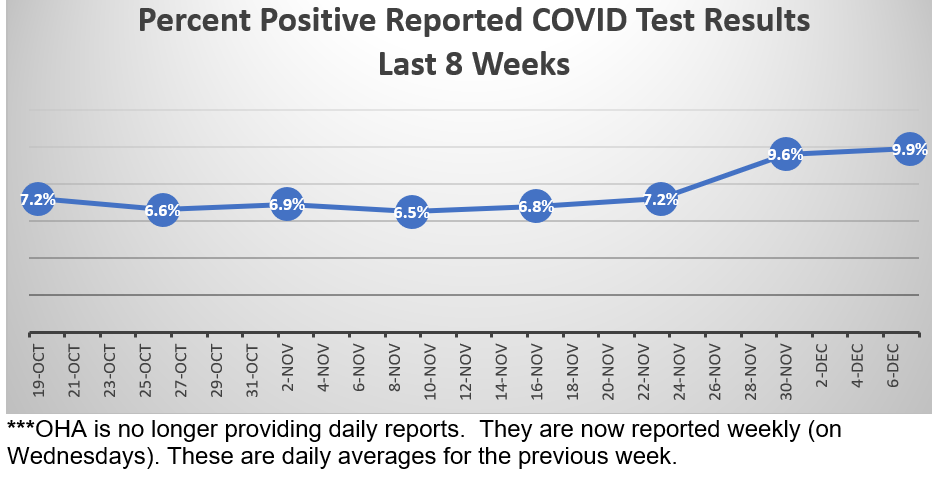
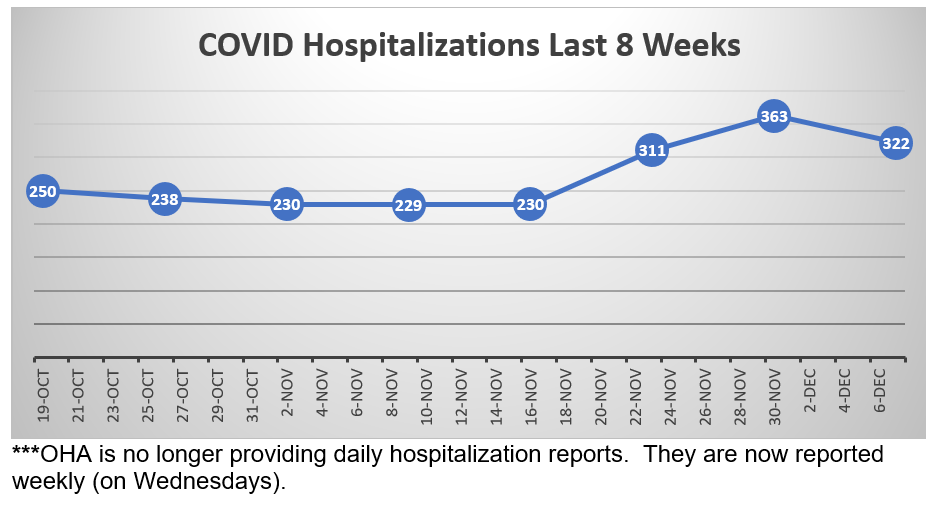
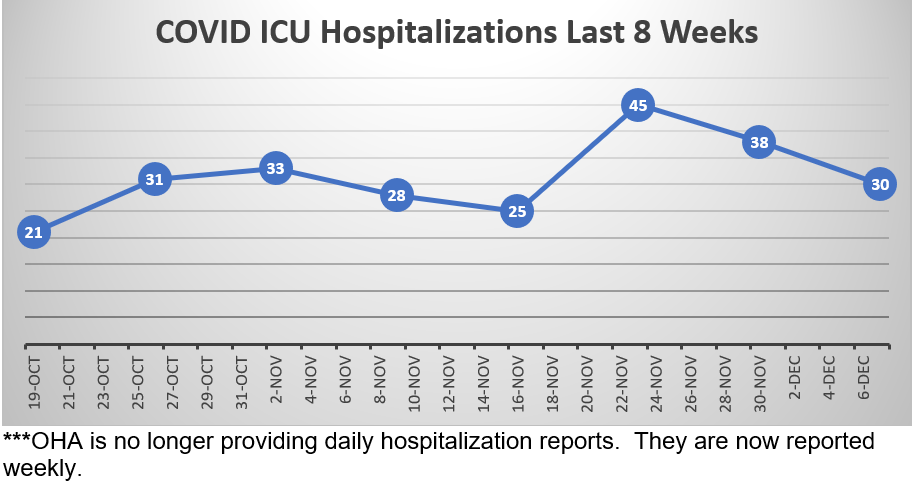
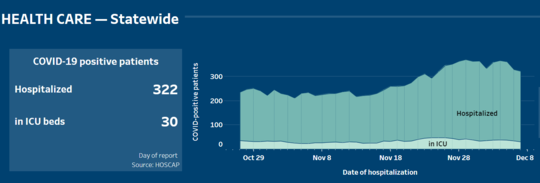

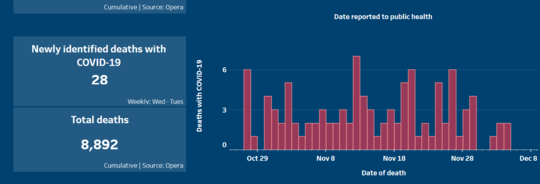
Here again are some COVID resources that you will find useful:
If the above links are not providing you with answers to your questions or directing you to the help that you need, please consider me and my office to be a resource. We’ll do our best to assist you or steer you in the right direction.
Want to See Past Newsletters?
If there was COVID-related information in a past newsletter that you want to go back to, but find you’ve deleted it, you can always go to my legislative website (senatordembrow.com), click on “News and Information,” and you’ll find them all there. Also, if someone forwarded you this newsletter and you’d like to get it directly, you can sign up for it there.
Best,
 Senator Michael Dembrow
District 23
email: Sen.MichaelDembrow@oregonlegislature.gov
web: www.senatordembrow.com
phone: 503-281-0608
mail: 900 Court St NE, S-407, Salem, OR, 97301
|